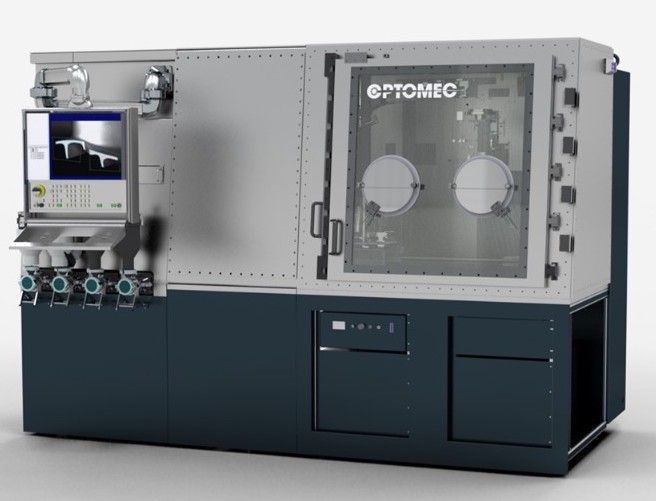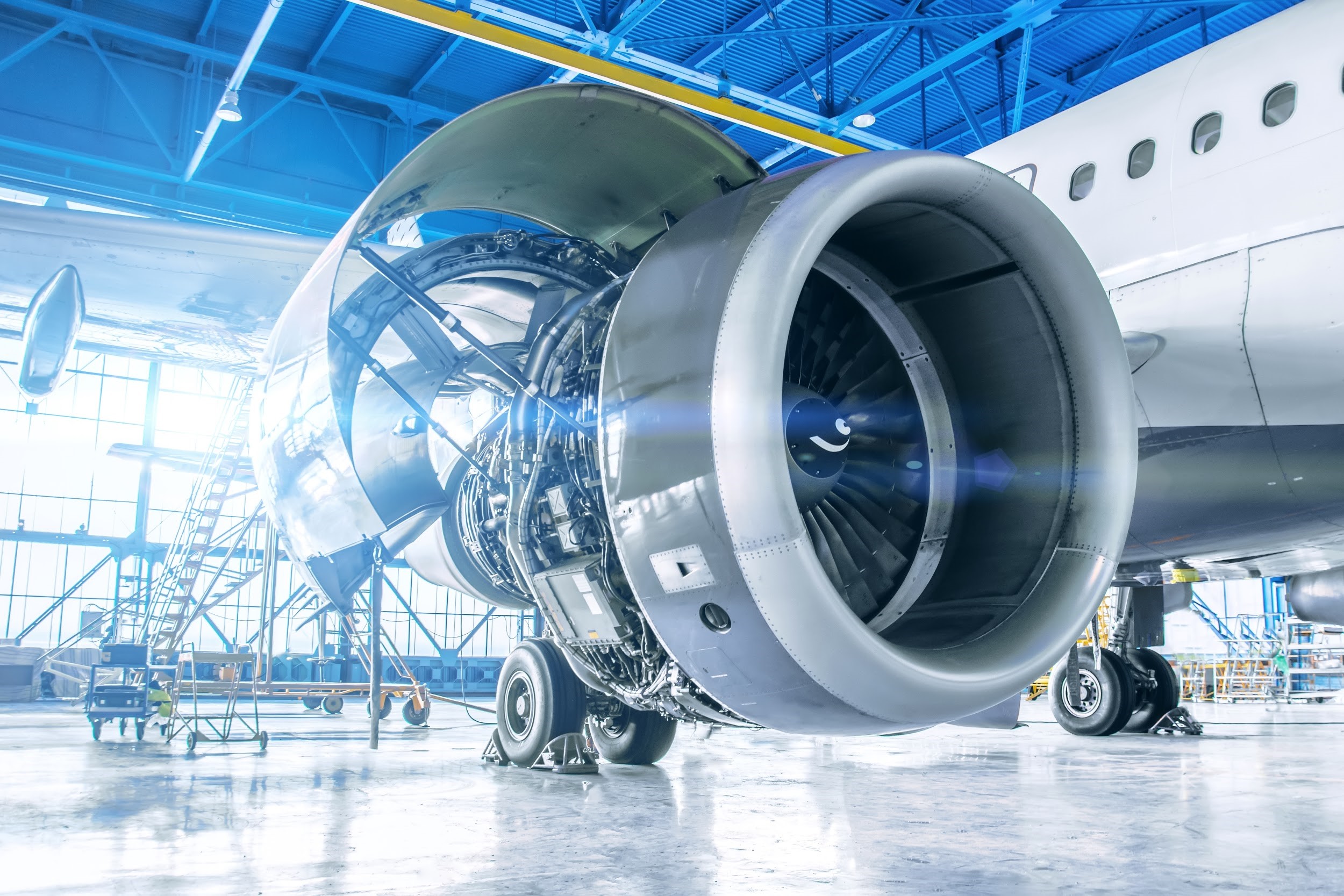Directed Energy Deposition (DED) and Aerosol Jet Printing (AJP) metal 3D printer developer Optomec has launched two new iterations of its LENS additive manufacturing systems.
Optomec’s CS250 machine is a compact research-oriented printer, with four integrated powder feeders, while its HC-TBR system has been designed for high volume applications. The latter features an integrated vision system and automation module for titanium parts, that enable users to operate the machine continuously within an inert atmosphere.
“The HC-TBR is the first machine capable of high volume production for reactive metals like aluminum and titanium.” said Mike Dean, Marketing Director at Optomec. “We’ve seen quite an increase in demand for these materials from our customers and expect the trend to continue as manufacturers move to lighter weight designs.”

Optomec’s LENS DED 3D printing technology
LENS is Optomec’s proprietary DED 3D printing process, which uses a metal powdered feedstock, that is blown through a nozzle and melted on contact with a laser array, to fabricate complex parts. The technology is particularly useful for adding material to pre-existing objects, which has often led to its application within Maintenance, Repair and Overhaul (MRO) operations.
In addition to LENS, the company markets its AJP-based machines, which are capable of printing electronics directly onto 3D objects. These systems have been applied to manufacture a variety of electronic products such as high-resolution circuits, strain sensors and wireless Bluetooth transceivers amongst others.
Recently, Optomec has sought to expand on the speed and compatibility of its machines via various upgrades. For instance, the firm released its AutoCLAD integrated vision software in November 2019, which generates a custom toolpath for each part prior to processing.
In terms of compatibility, the company has also developed parameters for processing pure copper parts, and released another update in May, that enabled users to deposit any aluminum alloy. With the launch of its new CS250 and HC-TBR systems, Optomec has now built machines that have been optimized for rapidly producing metal parts, that may be sensitive to atmospheric conditions.

Optomec’s new CS250 and HC-TBR 3D printers
According to the company, its two new systems have been built to offer “unparalleled” functionality, flexibility and performance. Both machines are based on its proprietary LENS DED technology, and the duo feature the same 250 x 250 x 250 mm build volume, which is well-suited to repairing parts and small component production.
Similarly, both the systems are set to be available in either three axis or five axis versions, and will be shipped with a new “next generation” print head. The enhanced apparatus is capable of automatically changing the laser’s size and intensity during printing, which allows different areas of a component to be fabricated with varying levels of detail.
The main focus of the two machines is their inert processing capability, that enables them to print reflective alloys such as copper and titanium, or common metals like steels or nickels. Optomec’s latest LENS printers utilize this technology in different ways, and the CS250 is a compact all-in-one system that’s been optimized for alloy development in research labs.
The HC-TBR, meanwhile, is an industrial-oriented 3D printer that’s characterized by an automation module, that allows atmosphere-sensitive parts to be processed without manual loading. Additionally, to ease its introduction into automated work cells, the HC-TBR features automatic antechamber doors, which can be opened and closed robotically.
For repair applications, Optomec’s new LENS system includes an integrated vision system run by its AutoCLAD software, which creates a custom toolpath for each part it encounters. The program actively compensates for part-to-part variation, while minimizing heat input into the component, by creating an “additive repair recipe” for each individual fabricated object.
The continued advance of DED technologies
Optomec isn’t the only company making advances in DED 3D printing, and a number of other researchers and firms are currently developing their own variants of the technology.
Metal 3D printing company Meltio’s M450 system, for example, combines powder and wire-based DED technologies to take advantage of the benefits of both. In fact, its Meltio Engine can even be retrofitted to CNC machines, robots, and gantry systems, enabling them to 3D print full density metal parts.
The Fraunhofer Institute for Laser Technology is developing an extreme high-speed version of DED, that has recently been adopted by gripper manufacturer Bilsing Automation. Working with partners in the UK, China and Germany, the institute is attempting to broaden the industrial applications of its new 3D printing technique.
Elsewhere, Additec launched its more value-oriented μPrinter in November 2019, which operates using a single central DED nozzle with two different openings for a wire or powder feed. By keeping the feeds separate, it allows users to easily switch between the two, depending on the desired outcome of the print.
To stay up to date with the latest 3D printing news, don’t forget to subscribe to the 3D Printing Industry newsletter or follow us on Twitter or liking our page on Facebook.
Are you looking for a job in the additive manufacturing industry? Visit 3D Printing Jobs for a selection of roles in the industry.
Featured image shows Optomec’s new CS250 LENS 3D printer. Photo via Optomec.



